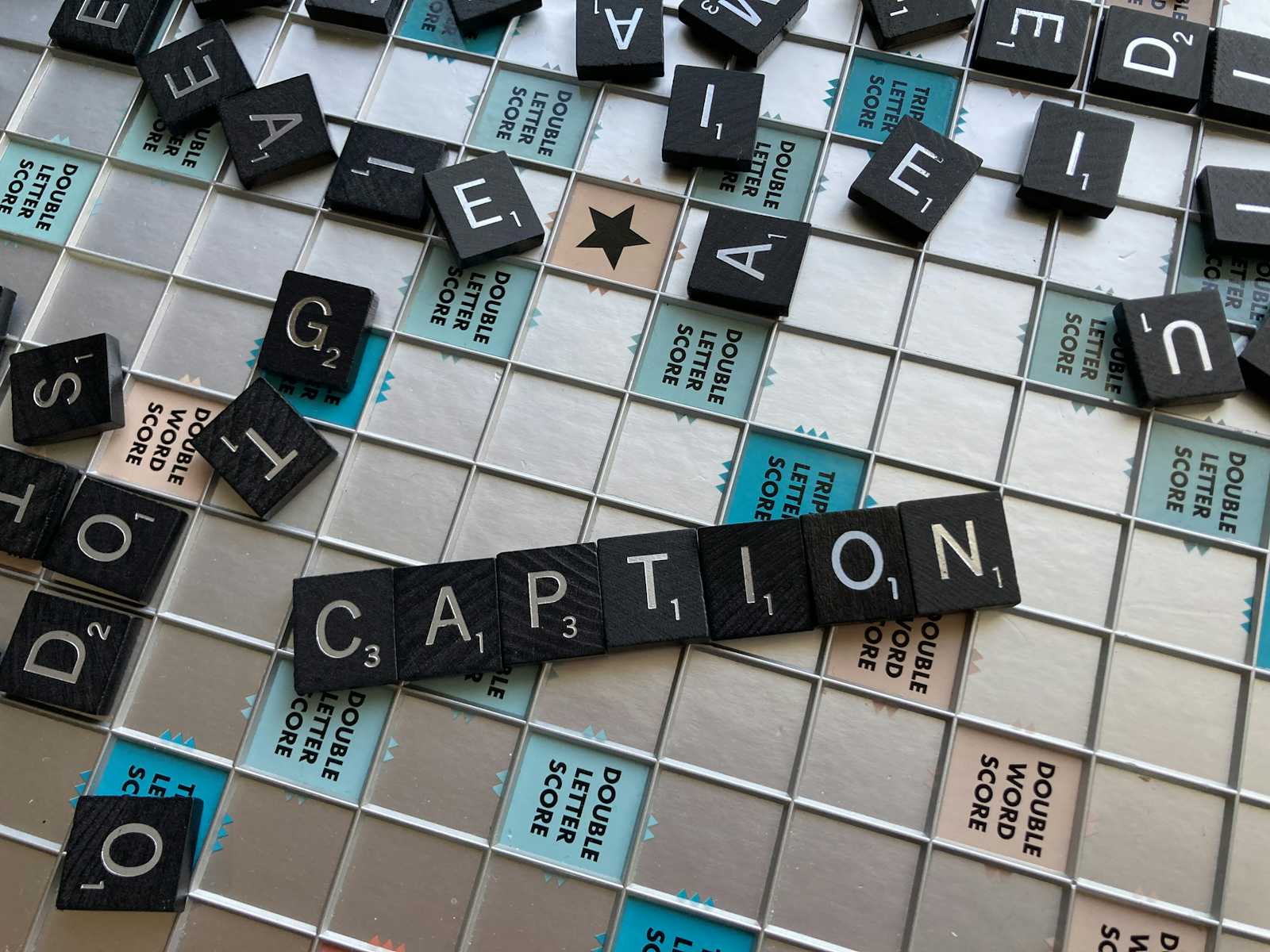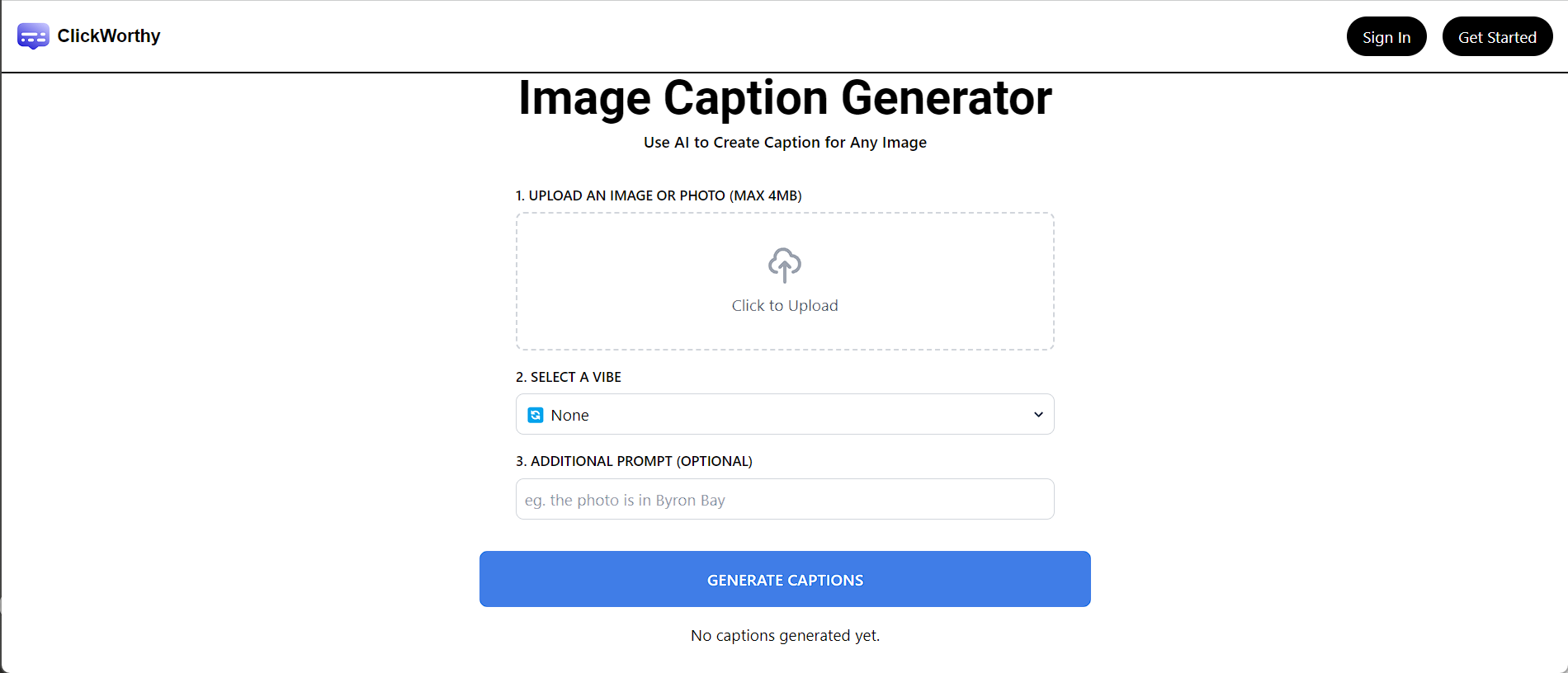This AI Tool Helps you write better Captions...
 Vishal Sharma
Vishal Sharma
As the world advances, the landscape of AI evolves in tandem. As a developer, I felt compelled to expand my horizons and create a project that harnesses this technology. Hashnode's AI for Tomorrow Hackathon provided the perfect opportunity, pushing me beyond my comfort zone to build something entirely new.
This challenge led me to develop my first AI tool - an image caption generator that considers both the visual content and the user's specified mood. The project features a user-friendly frontend, making it accessible to anyone interested in AI-generated captions. I named the tool Clickworthy and the feeling was like naming my baby.
I'm grateful to Hashnode for this hackathon, as it served as my entry point into the world of practical AI development. It challenged me to push my limits and create a tool I never thought I'd build, marking an exciting step in my journey as a developer in the age of AI.
Why I build this project?
As a new developer, I initially dreamed of building something as complex as Iron Man's FRIDAY on day zero. However, this ambition quickly led to imposter syndrome as I realized the vast knowledge gap I faced. This experience taught me the importance of starting with achievable goals and gradually building up to more complex projects.
Inspired by the AI ideas on the Hashnode Hackathon page, I decided to create an AI Image Caption tool. This project allowed me to explore fundamental concepts like LLMs (Large Language Models) and inference while creating something practical and user-friendly.
The growing importance of AI in our daily lives motivated me to dive deeper into this field. LLMs, which form the backbone of many AI applications today, fascinated me with their ability to understand and generate human-like text. I saw an opportunity to combine this technology with computer vision to create something both useful and accessible.
How I Built This Project
For this project, I leveraged the MERN stack, which I was already familiar with. To incorporate AI capabilities, I used Hugging Face's Inference API with the Salesforce/blip-image-captioning-base model for initial image analysis. To generate engaging captions and trending hashtags, I integrated the Gemini API.
The development process wasn't without its challenges. I had to quickly learn about LLMs, explore concepts like Langchain, and even experiment with open-source models like Ollama. Each obstacle provided a valuable learning experience, pushing me to expand my knowledge and problem-solving skills.If you want to contribute to this project then here is the repo link
How It Works?

The user uploads an image and selects a mood (e.g., happy, nostalgic, joyful) through the frontend interface.
Upon clicking the "Generate" button, the image is stored in the backend.
The Hugging Face Inference API analyzes the image using the stored path, producing an initial caption.
This caption, along with the user-selected mood, is then passed to the Gemini API.
Gemini generates an engaging, mood-appropriate caption and relevant hashtags.
The results are displayed to the user on the frontend.
What can we improve here?
There's always room for improvement in every project. For this AI Image Caption Generator, we could enhance its functionality and security in several ways:
Authentication: Implementing user accounts would allow for personalized experiences and better tracking of usage.
Rate limiting: To prevent system abuse and ensure fair usage, we could add rate limiting for API calls.
Sharing features: Adding options to easily share generated captions on social media platforms could increase user engagement.
If you want to do improvement in this project then please contribute to this project and if there is any feedback then please share with us.
Conclusion
This project exemplifies the potential of AI for tomorrow. By combining computer vision with natural language processing, we're creating tools that can understand and describe our world in increasingly human-like ways. As AI continues to evolve, projects like this will become stepping stones to more advanced applications that can assist and enhance human creativity and communication.
While my Image Caption Generator is just a small step, it represents the democratization of AI technology. It shows how developers at all levels can contribute to the AI landscape, creating tools that are not only powerful but also accessible to everyday users.
As we look towards the future of AI, it's clear that the possibilities are boundless. Projects like this serve as a reminder that the journey into AI development can start small but lead to significant innovations. The key is to remain curious, persistent, and open to learning at every step of the way.
Subscribe to my newsletter
Read articles from Vishal Sharma directly inside your inbox. Subscribe to the newsletter, and don't miss out.
Written by

Vishal Sharma
Vishal Sharma
I am a developer from Surat who loves to write about DSA,Web Development, and Computer Science stuff.